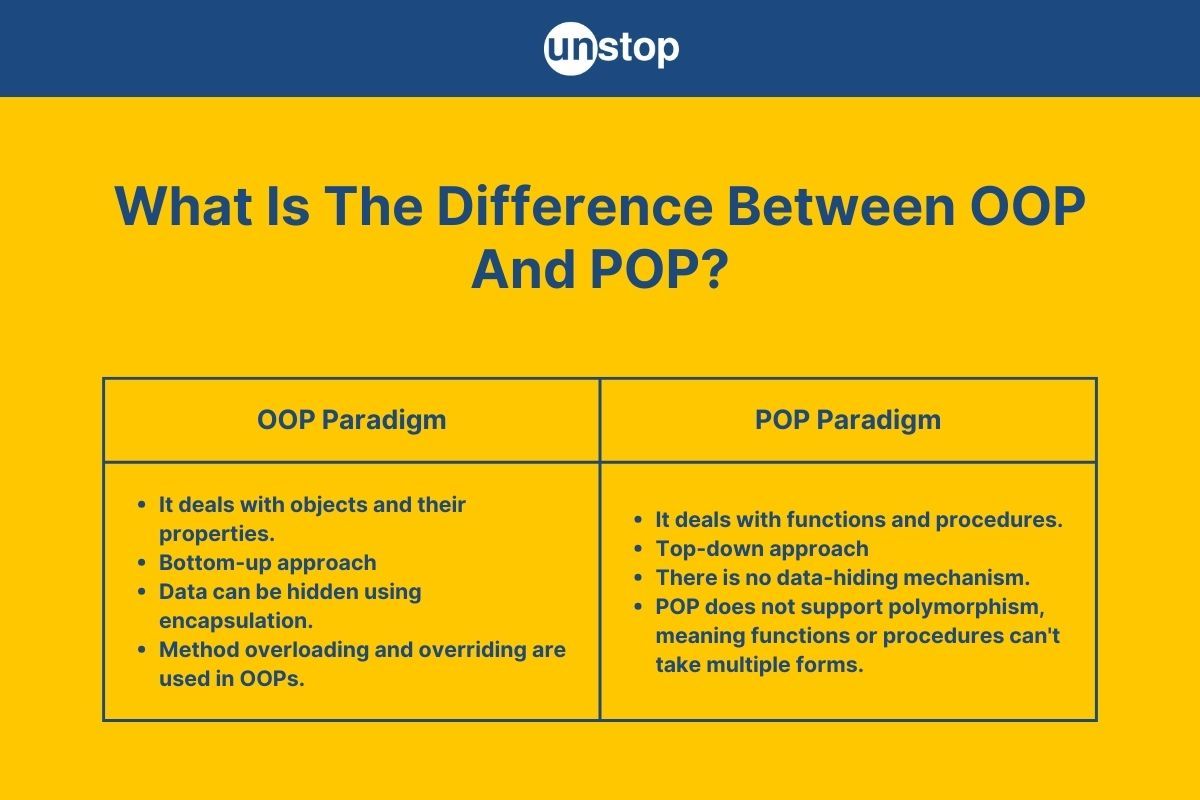| Parameter | Object-Oriented Programming (OOP) | Procedure-Oriented Programming (POP) |
|---|---|---|
| Definition | OOP refers to object-oriented programming. It deals with objects and their properties. | POP refers to procedural-oriented programming and deals with programs and functions. |
| Approach | An object-oriented program uses the bottom-up approach. | A procedure-oriented program uses the top-down approach. |
| Access Control | Access control is supported by access modifiers. These include public, private, and protected. | No access modifiers are supported. |
| Data Hiding | Data can be hidden using encapsulation. | There is no data-hiding mechanism. Data is globally accessible, as there are no access specifiers. |
| Entity Linkage | In OOP, objects communicate with each other via message passing, where objects invoke methods on other objects, enabling interaction and collaboration. | In POP, functions are executed sequentially, and communication happens through direct function calls, with parameters passed between functions. |
| Polymorphism | Method overloading and method overriding are used in OOP to achieve polymorphism. | POP does not support polymorphism, meaning functions or procedures can't take multiple forms. |
| Virtual Function and Inheritance | OOP supports inheritance and virtual functions and virtual classes via it. | There is no concept of inheritance in POP and neither does it support the use of virtual classes or virtual functions. |
| Code Reuse | OOP supports code reusability. | No code reusability is provided by POP. |
| Operator Overloading | It is allowed in OOP. | Operator overloading is not allowed in POP. |
| Modularity | Programs are organized into objects and classes, making code more modular and manageable. | Programs are divided into functions, but overall modularity is less enforced. |
| Security | High-level security is achievable using encapsulation and access modifiers. | Less secure due to global data sharing among functions. |
| Real-World Modeling | Easier to model real-world entities by combining data and functions into objects. | Harder to model real-world problems as data and functions are separate. |
| Ease of Maintenance | Easier to maintain and update code due to modularity and encapsulation. | Maintenance becomes difficult as the program grows in size and complexity. |
| Examples | Java, C++, Python (with OOP support), C# | C, Pascal, FORTRAN |
L'Oréal Brandstorm 2026

















Comments
Add comment